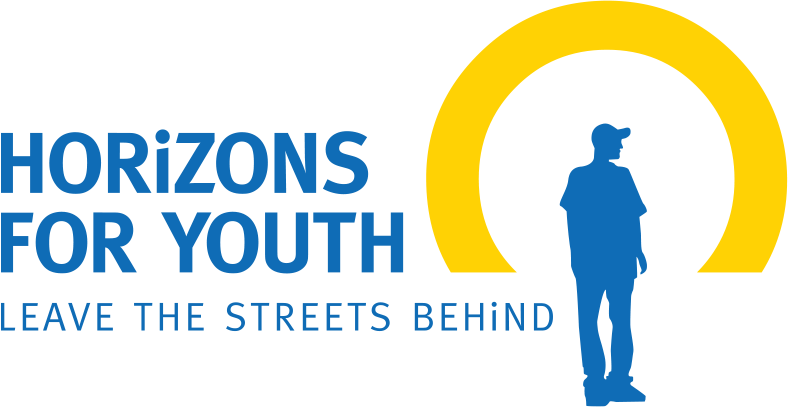There are many myths and stereotypes about homeless youth that are widely believed in our community. This misinformation perpetuates the stigma of homelessness, decreasing empathy for an already vulnerable population. Moreover, these stereotypes negatively impact the self-esteem of youth experiencing homelessness.
These myths must be dispelled to better support homeless youth and take action against homelessness.
Myth 1: All homeless youth are lazy and do not want to work
FACT: There is no evidence that homeless youth lack motivation to work or are avoiding employment. Rather, youth experiencing homelessness face unique barriers to find and maintain employment, including:
No stable address: Employers need addresses to process payroll, collect personal information and send communications
Difficult labour market: There is a shortage of jobs that pay a liveable wage. It is also more difficult to secure employment without access to networks and social capital
Lower levels of education: A high proportion of at-risk youth have lower levels of education, disqualifying them from certain jobs
Lack of resources: Homeless youth may lack appropriate clothing for job hunting, facilities to maintain their hygiene or the ability to get enough sleep
No reliable transportation: Vulnerable youth often do not have the resources to pay for public transportation to get to job interviews or to travel to work every day before their first pay cheque
Poor mental health: Undiagnosed and/or untreated mental health challenges may prevent youth from finding and maintaining employment
Limited phone or computer access: Access to a computer, printer and phone are vital for resume writing, job searching and connecting with prospective employers
This list, while not exhaustive, demonstrates the unique challenges that at-risk youth face to secure employment.
Myth 2: All homeless youth are addicts
FACT: Many youth experiencing homelessness do not struggle with addictions challenges. Just like in the general youth population, only a fraction of homeless youth experience substance use concerns. However, it is important to understand the link between homelessness, poverty and addictions. There are many factors that increase the risk of developing an addiction, such as poverty and oppression, family conflict and stress, physical, emotional or sexual abuse, challenges fitting in socially and having friends or family members with substance use concerns (1).
Myth 3: There are more than enough supportive services available for homeless youth
FACT: Alarmingly, there are not enough social services available in Toronto to support all of the youth experiencing homelessness. Emergency shelters, including Horizons for Youth, are almost always at capacity. Consequently, many youth do not have a safe bed at night and they are forced to sleep on the street or couch-surf. There are also long waitlists to access many supportive services in Toronto, such as subsidized housing, mental health services, addictions support and care for individuals with disabilities (2) (3). While there needs to be greater investment in emergency services to help address the homelessness crisis, government officials must also increase their support for innovative approaches to prevent and end homelessness.
Myth 4: All homeless youth chose to live on the streets or in shelters
FACT: Approximately 63% of homeless youth in Canada have experienced childhood trauma and abuse. Given this, it is not surprising that 57.8% of youth experiencing homelessness have had involvement with child protective services in their lifetimes (4). Sadly, many youth who become homeless are escaping households where they endured physical, emotional or sexual abuse or neglect by their parents or caregivers.
Discrimination by family members or caregivers also forces youth to leave home. LGBTQ2S+ youth experience disproportionately high rates of homelessness. It is estimated that 20-40% of homeless youth identify as LGBTQ2S+. LGBTQ2S+ youth often become homeless because they experienced identity-based rejection by their families after coming out. Furthermore, homophobic and transphobic discrimination and violence in housing programs and employment create challenges to finding safe places to live for LGBTQ2S+ folks (5).
Summary:
To appropriately tackle the issue of youth homelessness, these myths must be dispelled and understood to be false by the general public. Join us in dispelling these pervasive myths in our community.
References:
1. Herie, M., Godden, T., Shenfeld, J., & Kelly, C. (2007). Addiction: An Information Guide. Centre for Addiction and Mental Health. http://www.camh.ca/-/media/files/guides-and-publications/addiction-guideen.pdf#:~:text=Addiction%3A%20An%20information%20guide%201%201%20what%20is,easier%20to%20cope%20with%20problems.%20Some%20use%20substances
2. Children’s Mental Health Ontario. (2020). Kids Can’t Wait: 2020 Report on Wait Lists and Wait Times for Child and Youth Mental Health Care in Ontario. https://cmho.org/wp-content/uploads/CMHO-Report-WaitTimes-2020.pdf
3. Aleman, A. (2016, October 21). With long wait times for social housing, what can be done to meet the housing needs of homeless people and those at-risk?. Retrieved from: https://www.homelesshub.ca/blog/long-wait-times-social-housing-what-can-be-done-meet-housing-needs-homeless-people-and-those
4. Gaetz, S., O’Grady, B., Kidd, S., & Schwan, K. (2016). Without a Home: The National Youth Homelessness Survey. Canadian Observatory on Homelessness Press. https://homelesshub.ca/sites/default/files/WithoutAHome-final.pdf
5. Abramovich, A., & Pang, N. (2020). Understanding LGBTQ2S Youth in Homelessness in York Region Report. https://www.homelesshub.ca/sites/default/files/attachments/Report_LGBTQ2S_Youth_York_Region_Abramovich_Pang.pdf
Written by Stacey Murie
Questions about this article? Comment below.

